Enhancing Search Results with Rich Snippets: A Guide to Structured Data Markup

- Semil Shah
- August 2, 2023

Table of Contents
Rich snippets are a type of structured data markup used by search engines to enhance the display of search results and provide more detailed information about a webpage’s content. They are designed to make search results more informative and visually appealing, providing users with additional context and making it easier to find relevant information quickly.
These snippets can show different types of information, like ratings and reviews for products or businesses, recipes with cooking instructions and ratings, details about upcoming events such as dates and locations, and frequently asked questions along with their answers.
Why are Rich Snippets important?
Rich snippets are exceptional search results that show more than just the usual title, description, and web address. They use organized data to give search engines more details about what’s on a webpage. This helps search engines create more informative and attractive search results, giving users more helpful information before clicking a link.
Rich snippets in SEO are essential for the following reasons:
Improved Visibility:
Rich snippets make your search result stand out among the competition. They catch users’ attention more effectively by presenting eye-catching elements like star ratings, images, or product prices, giving users a quick idea of what to expect.
Increased Click-Through Rates (CTR):
When search results are more informative and visually appealing, users are likely to click on them. High CTR indicates to search engines that your content is relevant and valuable, which can positively impact your rankings.
Better User Experience:
Users can quickly determine if a page matches their needs or interests by providing relevant information upfront. This reduces the chances of returning to the SERP and improves overall user satisfaction.
Ready to Chat About
Enhancing Search Results with Rich Snippets: A Guide to Structured Data Markup
Drop us a line today!
Higher Conversion Rates:
For businesses, rich snippets can be particularly beneficial. Displaying product prices, ratings, and availability in search results helps users make informed decisions, increasing the likelihood of conversions.
Suppose you have an e-commerce website selling smartphones and want to promote a specific product, the “Apple Smartphone.” With traditional search results, it might appear like this:
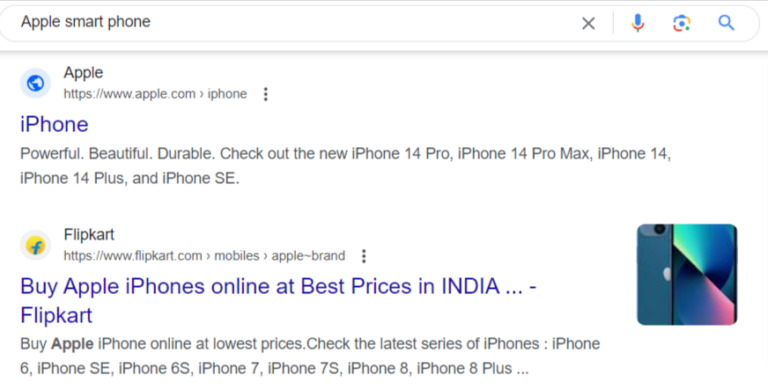
Now, let’s see how Rich snippets improves the search

In this example, the rich snippet provides valuable information, such as the recipe’s rating, cooking time, and calorie count. Users can quickly see that the recipe is well-rated, takes only 30 minutes to prepare, and each cookie has 150 calories. This enticing preview increases the likelihood of users clicking on your link to get the full recipe, leading to higher engagement and potential conversions.
Structured Snippets are more visually appealing to readers than regular search results, resulting in an increased click-through rate (CTR) for organic search.
Best Practices to follow to get a Rich Snippets
Opt for a type of Rich Snippet
First, you must decide what kind of particular search result you want to appear on your webpage. Then, you can use structured markup customized for that specific type of search result to make it happen on the search engine results page (SERPs).
While numerous Rich Snippet types are available, many are relevant to various kinds of websites.
Therefore, we will focus on the eight most commonly encountered Rich Snippet types.
We will also understand each point with rich snippets examples.
1. Reviews:
Rich snippet review type displays ratings and reviews for products, services, or businesses. It gives users a summary of other people’s opinions and helps them make informed decisions.
For example, a review snippet for a restaurant might display the average rating and a few customer reviews.Web admins can rely on a Rich Snippets Testing Tool to ensure the proper implementation and display of these snippets.

2. Recipes:
Recipe Rich Snippets show extra details about recipes, like ingredients, cooking time, and instructions. They help users find and compare recipes more easily. For instance, the search results might show a chocolate cake recipe snippet with the ingredients, cooking time, and step-by-step directions.

3. Music
Music Rich Snippets provide details about songs, albums, artists, and other musical content. They can display information like the song title, artist name, album cover, and even audio previews. For instance, a music snippet for a popular song might show the title, artist, album, and a play button for a short preview.

4. Product Markup:
This Rich Snippet type displays detailed information about a product, such as price, availability, reviews, and ratings. It helps users compare products directly in search results. An example could be a product snippet for a smartphone, showing its name, image, price, availability, and average rating.

5. Organization:
Organization Rich Snippets provide information about a specific organization, such as its name, logo, contact details, and social media profiles. They help users quickly find relevant information about a company or institution. For example, an organization snippet for a tech company might display its logo, address, and phone number.
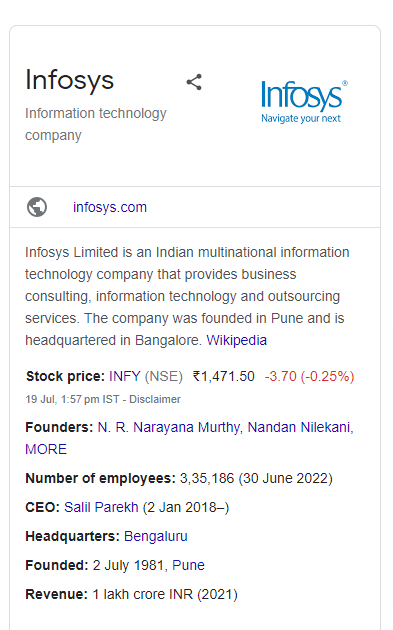
6. Top Stories:
Top Stories Rich Snippets display news articles and headlines from authoritative sources. They show a carousel of recent news stories on a specific topic and include the article title, source, and published date. This snippet type helps users stay updated on current events.
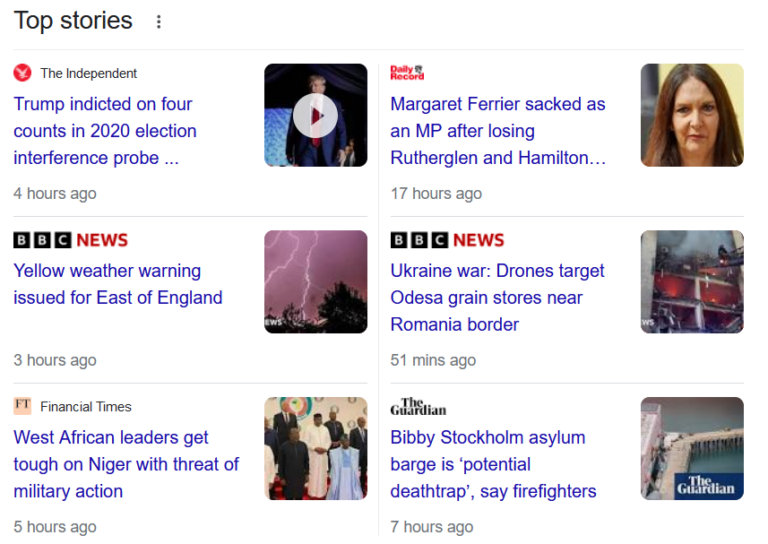
7. Video:
Video Rich Snippets enhance search results by displaying video content from platforms like YouTube. They include a thumbnail, duration, and other relevant details about the video. For example, a video snippet for a tutorial might show the video title, uploader, thumbnail image, and duration.

8. Events:
Event Rich Snippets provide information about upcoming events, such as concerts, conferences, or sports games. They display details like the event title, date, time, location, and ticket availability. An event snippet for a music festival might show the festival’s name, date, site, and link to purchase tickets.
These rich snippets enhance search results by giving users more context and making finding the information they’re looking for easier.
What is structured Data?
In SEO (Search Engine Optimization), structured data is like special coding that website owners can add to their site’s HTML. This coding gives extra information to search engines about what’s on the page. It helps search engines understand the content better, which can lead to more informative and visually appealing search results called “rich snippets.”
The most widely used structured data format is Schema.org, which is a collaborative project supported by major search engines like Google, Bing, Yahoo, and Yandex.
Schema.org provides a standardized vocabulary of tags (or schemas) that webmasters can use to annotate their content.

All that’s required to discover the appropriate markup type for Schema.org is to perform a quick lookup on their platform
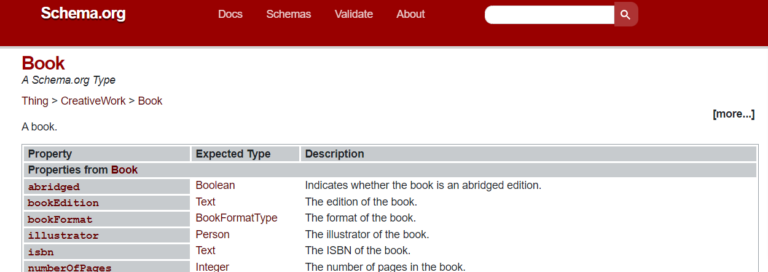
… then implement the markup for your content in accordance with the guidelines provided on that page.
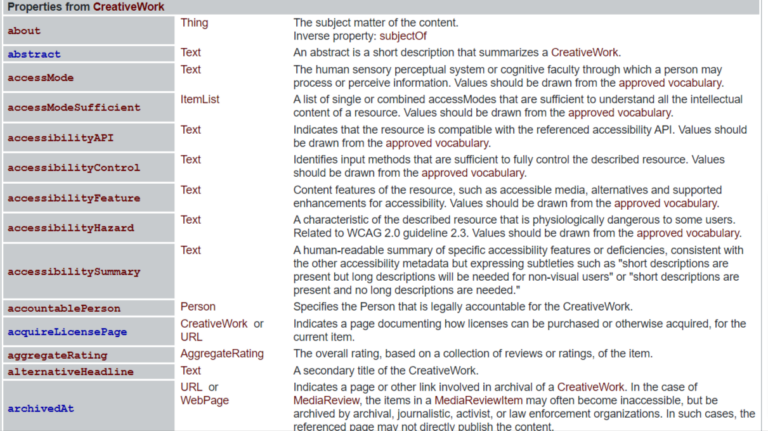
Google offers extensive resources and documentation on Structured Data.
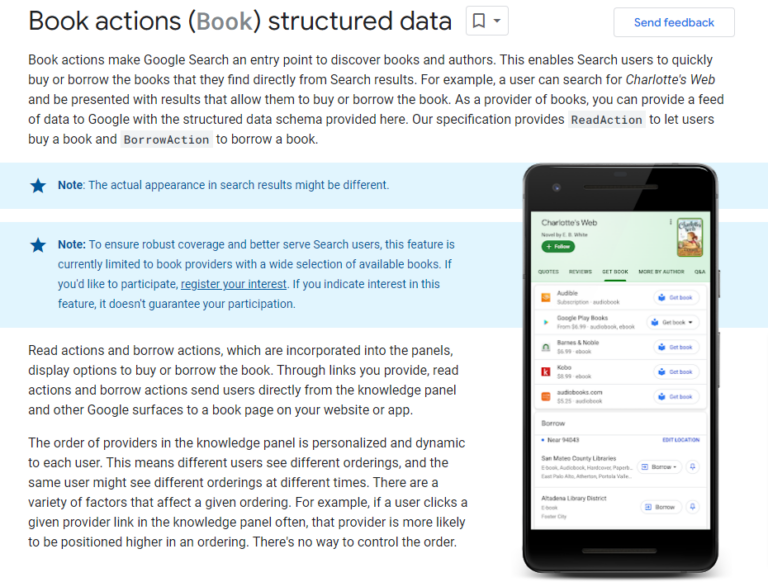
I think Google has designed its solutions with simplicity in mind, catering to those without extensive programming knowledge. Adding Structured Data code to your website offers a customizable experience, allowing you to choose the approach that fits your requirements.
If you are using WordPress, you have access to a wide range of plugins that can help you with various tasks. You’ll find many options specifically designed to cater to your needs and make your work more efficient. These plugins offer unique functionalities and can be easily installed to enhance your WordPress experience.
If you prefer to rely on something other than plugins for adding Structured Data Markup to your website, there are two other popular methods: Microdata and RDFa. However, I strongly recommend using JSON-LD as it offers the most straightforward approach to implementing Schema Markup effectively.
When you don’t use JSON-LD, you have to manually insert the Structured Data into the HTML code of your webpage. This means you must include specific tags and attributes in the HTML to define the structured elements properly.
To clarify further:
Without JSON-LD, you must manually integrate the Structured Data into your HTML page by adding specific markup tags and attributes directly to relevant content elements.
Adding Structured Data using Microdata or RDFa requires a more intricate process: mark the data within the HTML code using respective attribute names and values.
Example of using Microdata:

Example of using RDFa:

However, if you use JSON-LD, you can place the Structured Data in a separate script tag, which is more straightforward and does not interfere with the HTML structure.
Example of using JSON-LD:
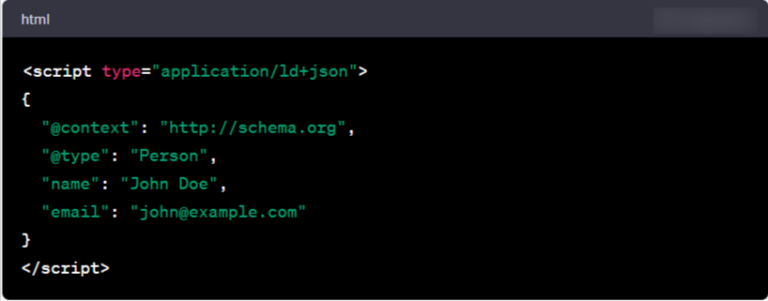
Experimenting with the Structured Data Test Tool
The “Structured Data Test Tool” is a tool Google provides to test and validate structured data on web pages. Structured data is a standardized format that includes information about a webpage’s content to search engines, helping them better understand and display the content in search results.
Follow these steps to use Rich Snippets Testing tool:
Access the Tool: Open a web browser and go to the Google Structured Data Testing Tool website.
Enter URL or Code: You can either enter the URL of the webpage you want to test or paste the structured data code directly into the tool.
Validate Structured Data: Click the “Run Test” or “Validate” button to perform the test.
Review Results: The tool will analyze the structured data and provide feedback on whether it’s valid or if there are any errors or warnings. If there are issues, the tool will indicate what they are and suggest potential fixes.
Writing structured data involves using specific markup formats like JSON-LD, Microdata, or RDFa to define the structured information on your webpage. For example, here’s how you might write structured data for a recipe using JSON-LD format:
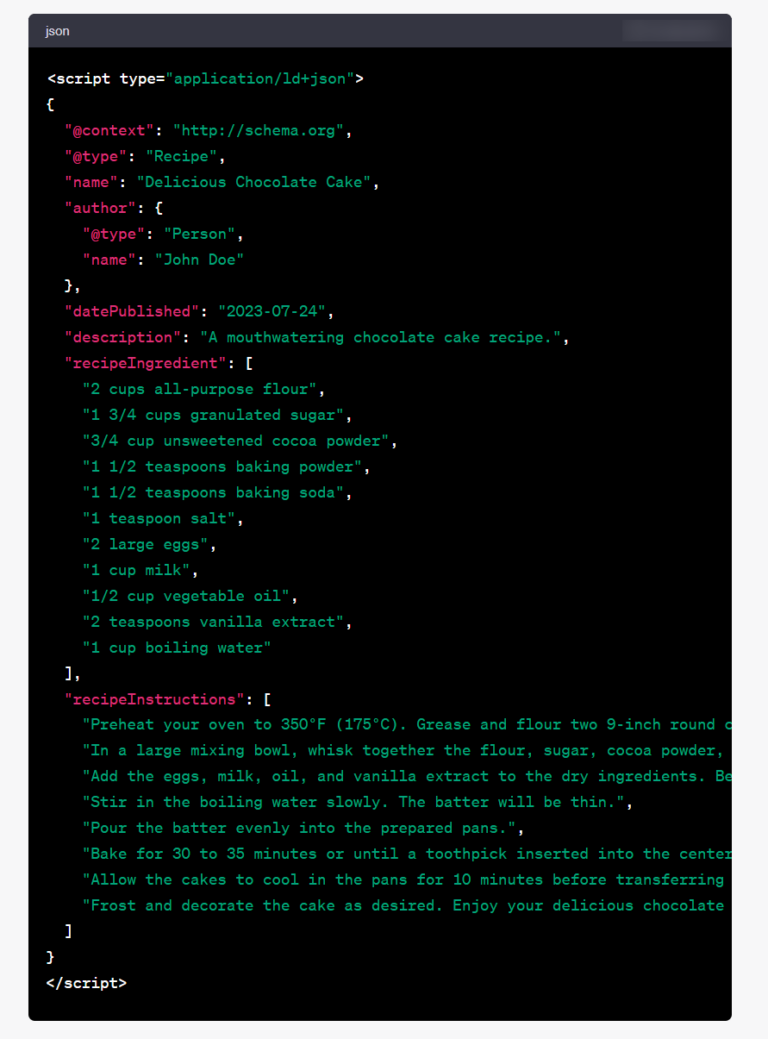
Remember to adjust the data according to your specific use case. Once you have added structured data to your webpage’s code, you can use the “Structured Data Test Tool” to implement it correctly and identify potential issues.
Just because you’ve set up Structured Data ideally doesn’t mean you’ll get Rich Snippets. Google itself says this in their documentation. So, it’s not a sure thing, even if everything is set up perfectly.
In other words, Correctly implementing Structured Data increases the chances of obtaining Rich Snippets, but it could be a better method. There are instances where it may not work as expected.
About the Author
My name’s Semil Shah, and I pride myself on being the last digital marketer that you’ll ever need. Having worked internationally across agile and disruptive teams from San Fransico to London, I can help you take what you are doing in digital to a whole next level.


